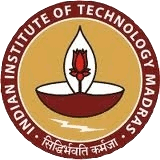Team:IIT Madras/Approach
From 2013.igem.org
Approach
The IIT Madras iGEM 2013 project involves a novel and holistic two fold approach to combating the issue of Shiga toxin. In the first part of our project, we plan to express and export a small Gb3 mimic peptide in E. coli, which is an effective anti-toxin against the deadly Shiga toxin. It was originally identified by enriching a phage display library, and was subsequently found to inhibit Shiga-toxicity by binding to the one of the B subunits of the toxin1. This novel peptide is not naturally occurring and has to be produced synthetically for any kind of biological studies.
The design of our team’s system not only allows the expression of this 9 amino acid peptide in a biological system, but also allows its secretion to the extracellular region of the cell after it has been synthesized in the cell. This aspect was specifically designed into the system to make the downstream processing more convenient. The design also allows for endogenous control over expression of the anti-toxin peptide.
More specifically, in order to incorporate ease of downstream processing, we synthesized the coding sequence of this peptide with the OmpF signal sequence
upstream since OmpF has been reported to effectively export small peptides upto approximately 3.5 kDa outside the cell. For endogenous control of protein
production, we clone this entire construct downstream a previously characterized iGEM part- BBa_F2620, an AHL induced LuxR promoter. Theoretically, this
allows us to control the amount of peptide produced depending on the concentration of AHL in the rumen of cattle.
Fig.1: Conceptual Schematic of the Gb3 mimic peptide gene construct.
We propose to validate the peptide produced by HPLC since the small size of the peptide does not justify running SDS PAGE.
The second part of our approach involves attacking the very core mechanism that leads to the production of the toxin in the first place- the formation of a biofilm, specifically, the biofilm formed by E. coli O157:H7 in the gastrointestinal tract of the cattle.
To accomplish this, we have chosen a small biomolecule which is known to be a potent inhibitor of O157:H7 biofilm- indole-3-acetaldehyde (I3A). I3A acts by repressing two very important curli forming operons, csgBAC and csgDEFG thereby inhibiting the bacteria from attaching to the gastro-intestinal (GI) tract. The reasons for choosing this specific inhibitor are elucidated below-
-
I3A is a natural compound and present as an intermediate in Indole-3-Acetic Acid (IAA) synthesis pathway in plants.
-
The precursor molecule required for I3A production is tryptophan which is abundantly present in the cell.
-
I3A does not kill the bacteria but simply inhibits them from colonizing the GI tract, and hence it is highly unlikely that the O157:H7 would develop any sort of resistance against it.
-
The enzymes (Tryptophan Transaminase (TAA1) and Indole Pyruvate Decarboxylase (IPDC) required for conversion of tryptophan to I3A do not have post-translational modifications and hence can be expressed in functionally active forms in E. coli.
-
I3A has not previously been reported to be bio-synthetically produced.
Fig 2: Conceptual Schematic of the gene construct for I3A producing system.
Since we need I3A to be produced in accordance with AHL abundance in rumen of cattle, we have designed and synthesized a polycistronic construct of TAA1
and IPDC and cloned it under the control of the same AHL-inducible pLuxR promoter system as used in the first construct.

We plan to validate this second half of our project by testing for the small molecule indole with an indole test after expression of the given enzymes in bacteria which inhabit the GI tract of cattle e.g. Lactococcus lactis. We expect that indole will be secreted out of the cells and show a positive result with the indole test hence, successful production of indole in indole negative bacterial strain- Lactococcus lactis.
 "
"


